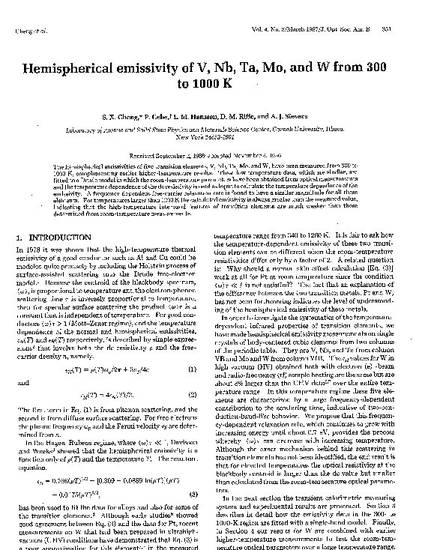
The hemispherical emissivities of five transition elements, V, Nb, Ta, Mo, and W, have been measured from 300 to 1000 K, complementing earlier higher-temperature results. These low-temperature data, which are similar, are fitted to a Drude model in which the room-temperature parameters have been obtained from optical measurements and the temperature dependence of the dc resistivity is used as input to calculate the temperature dependence of the emissivity. A frequency-dependent free-carrier relaxation rate is found to have a similar magnitude for all these elements. For temperatures larger than 1200 K the calculated emissivity is always greater than the measured value, indicating that the high-temperature interband features of transition elements are much weaker than those determined from room-temperature measurements.

Published in Journal of the Optical Society of America B. © 1987 Optical Society of America. Publisher PDF is available for download through link above.